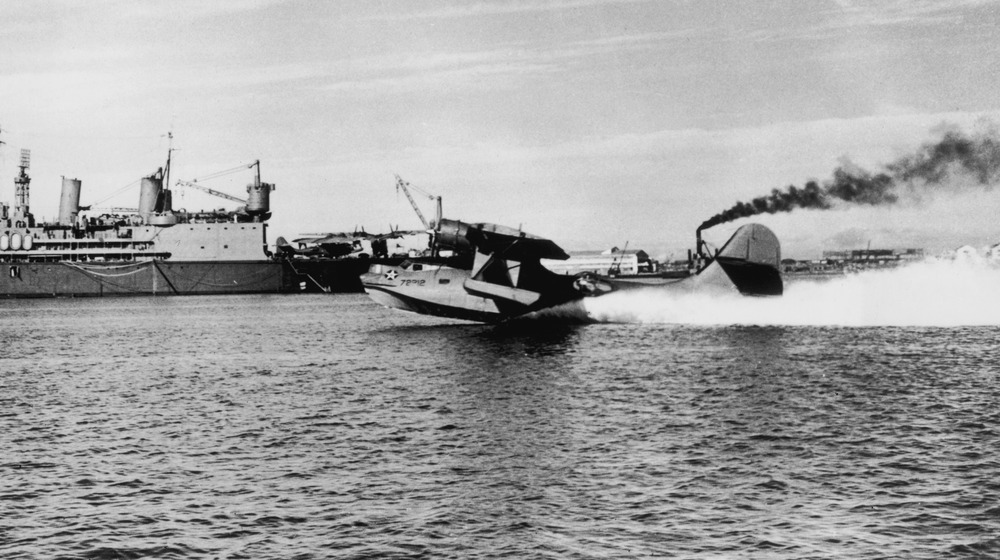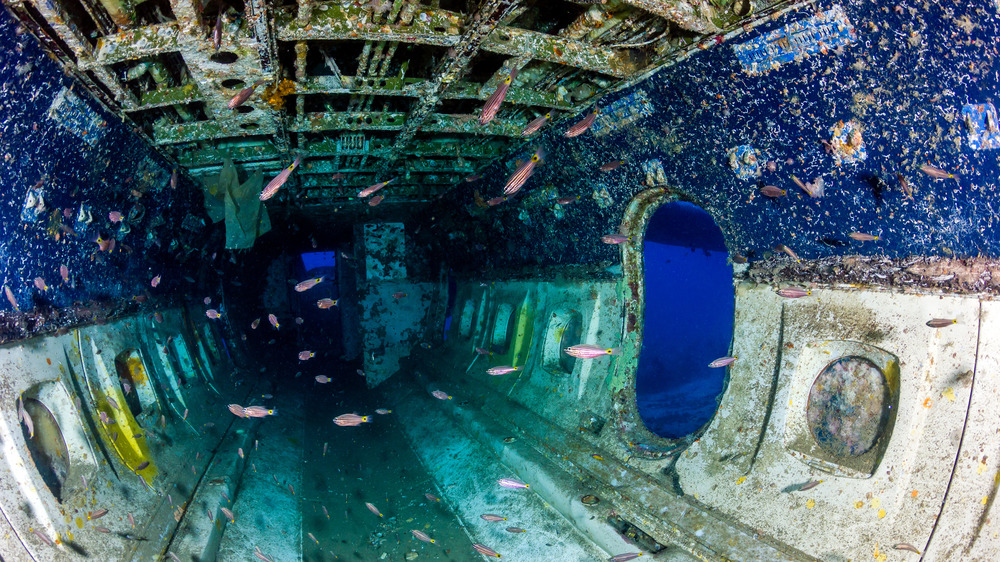The Truth About The First Commercial Plane Hijacking
Imagine airport security so lax that it would have no metal detectors, no TSA agent, no luggage searches, and maybe not even an ID check. That's how it was until a spike in plane hijackings dominated the news in the 1970s and forced federal and international officials to take action. But before hijackings and terrorism went hand-in-hand, heists were the most common reason for commandeering a plane. In fact, it wasn't called "hijacking" at all.
On July 16, 1948, a new crime was committed. Four men flying to Hong Kong from the then-Portuguese colony of Macau attempted to take control of the aircraft, making it the first-ever hijacking of a commercial plane and ending with all but one of the 27 people on board dead.
Commercial Hijacking Didn't Even Exist Yet
The crime was so unprecedented that it wasn't even known as hijacking at the time. News reports referred to it as an act of "air piracy," and the astonished managing director of Cathay Pacific Airways said that "the facts were so fantastic that they appeared incredible," according to the South China Morning Post (via World History Project).
The aircraft was a seaplane called Miss Macao, operated by the Hong Kong-based Cathay Pacific airline. Miss Macao was instituted to capitalize on Macau's prominence as a trading hub and was known for shuttling wealthy businesspeople and gold bullion between Macau and Hong Kong.
Although the hijackers may have set their sights on a smart target, they were far from knowledgeable about what they were trying to pull off. This wasn't a gang, nor were they even a band of skilled thieves; they were villagers from a nearby island. One of them, who happened to be trained as a pilot, developed a scheme to overtake the seaplane, fly it to a remote location, and then rob and hold the wealthy passengers for ransom.
A diverse group of passengers were on board the Miss Macao that day in 1948. A millionaire executive at a gold bullion firm, a Coca-Cola employee, the ringmaster of a traveling circus, and the four hijackers dressed in suits and hats like gangsters from a movie set all sat in the amphibious aircraft behind 27-year-old American pilot Dale Cramer and 23-year-old Australian first officer Ken McDuff.
Shortly after the flight took off from Macau, the four took out their guns and ordered the pilots to relinquish the controls. Stunned and outraged by this unprecedented act, the pilots refused and the cabin became a place of chaos as some of the passengers took on the hijackers. One of the bullets struck Cramer in the back of his head, killing him instantly. Cramer's body slumped forward onto the controls and sent the plane on a trajectory toward the water below.
"The plane must have turned right round and dived into the sea at a very steep angle, the impact tearing off the nose," read Cathay Pacific's statement at the time, according to Charles Eather's book, Syd's Pirates (via Ching Chic's). "The force of the water, under extreme pressure, rushed through the fuselage and tore away the tail. In all probabilities, it flushed out the sole survivor Wong Yu who was at the back of the plane."
That sole survivor was Wong Yu — one of the four hijackers.
After being brought ashore, he was treated for a variety of injuries, including broken limbs. Wong Yu was kept for questioning, and an investigation into his financial background led officials to suspect he was one of the hijackers, but he was not cooperating. Following months of different interrogation tactics, he did eventually confess to the crime, according to Gavin Young's book, Beyond Lion Rock. However, none of the authorities involved knew how to prosecute him. Because the crime had taken place on a plane over water, Portuguese authorities in Macau and British authorities in Hong Kong disagreed on whose jurisdiction Wong Yu fell under.
After three years of awaiting trial, Wong Yu, the first commercial hijacker, was allowed to return to China. Nobody knows what happened to him after that.

